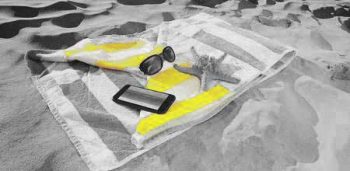Who’s afraid of responsibility?
In the Scheveningen district of The Hague in the Netherlands lies a miniature park called Madurodam, home to a range of 1:25 scale model replicas of famous Dutch landmarks. Among them is a statue of the famous Dutch boy, who has taken responsibility and plugged a leaking dike (picture on the right).
The story originates in a wonderful children’s book by the American author Mary Mapes Dodge, first published in 1865, The Silver Skates or Hans Brinker. The story is but a small fictional detail in the book, which was based on true events, but it carries a powerful educational message.
The brave and responsible boy in the story, called simply “The Hero of Haarlem”, has gained International fame, read aloud to children for generations. One day, the boy was walking along the dike, when he spotted a leak in the dike. The dikes in Holland protect the people in the country, which is below sea level, from devastating floods, therefore Dutch children are well used to look for the dike’s condition. Because he was completely alone and far from his village, he didn’t know what to do, and din’t dare to leave the dike and allow the leak to continue. The only solution he could see was plugging the leak with his finger.


The water was cold, his position on the dike uncomfortable, the night was coming and there was no-one around, but the boy remained in his place. In the morning, the village people went on their business, found him and repaired the dike, and so the valley was saved from flood.
Several monuments were raised in honor of the boy (who never existed), or, it would be better to say, in order to remind people of this most powerful message: taking personal responsibility, even when it is uncomfortable and not easy, or when you don’t appear to be big and strong enough.
Taking responsibility is not human nature
It is customary to think that running from responsibility is human nature. That people are willing to do no more than the barest minimum, that they are lazy and do not like their peace disturbed, and would prefer doing nothing over taking any sort of initiative. In Israel we even have a phrase coined for it: a “small head”.
Naturally, it is customary to accompany this observation by a small side step, to exclude the freaks of nature among us, the suckers, those who actually like to “enlarge their heads”.
And of course, there is one of these interminable Russian phrases fitting the situation, as well, which declares that “all initiative is punishable”.
Without doubt, this belief is backed by lots and lots of observation, life experience and social proof. Especially in Russia.
Therefore, taking as baseline this approach that “people are afraid of responsibility” and basing our reality on it, the inevitable conclusion would be that they need to be managed, we must demand from them at every step required performance. In other words, tell them what to do, how and when to do it… and punish when the requirements are not met.
Wait, so it isn't true?
You already know me. As usual, I would like to suggest a different reality, also no less backed by social proof. And all that is required in order to make it your reality is… adopt a different approach.
So I would ask you, in the way Life Coaches do, to empty your half-full glass for the next few minutes, so we could fill it with something else, new and fresh.
Agreed? Splendid.

Crime, commitment and the responsive bystander
In February 1975 a research was published in the Journal of Personality and Social Psychology, Vol. 31 Issue 2 by Thomas Moriarty, called Crime, commitment and the responsive bystander: two field experiments. It summarized two fascinating field experiments in social behavior made in the summer of 1972, in which the research team observed the willingness of uninvolved bystanders to intervene in order to stop a theft of someone else’s belongings.
In the first experiment, the team staged the theft of a radio left unattended on a beach towel at the Jones Beach in New York. When one of the team members pretending to be a bather has left the radio unattended on the beach towel and another tried to “steal” it, only 4 out of 22 people intervened and chased the thief to stop the theft. On the other hand, when the owner of the radio has asked the neighbors to watch his things while he would step away, 95% of the people (19 out of 20) have intervened and stopped the “theft”.
In the second experiment, a woman entered an Automat cafeteria in New York city, put her suitcase by a table where another person was already eating, and went to get herself some food. While she was away, a young man entered the cafeteria, took her suitcase and began to walk out with it. Only 1 out of 8 people eating at the woman’s table tried to stop him from doing so.
But when the same woman entered the cafeteria, put down her suitcase by a table where a person was already eating and asked that person to keep an eye on her suitcase while she got herself some food, the person at the table prevented the theft every time. That is 100% of the time.
The conclusion was obvious: a person who committed himself even to a complete stranger would take responsibility, willingly and by his own initiative.
Repeating the experiment
You may say, OK, that was back in 1972. People were more responsible then, there was less crime. That was what the ABC News investigators thought, as well, when they decided to repeat the 1972 beach towel experiment in 2009. You may find their article, Recreating the ‘Beach Blanket Experiment’ by Ann Varney from March 2009 at the ABC News website. They also decided to spice it up a bit.
Like in 1972, at first, the actress made no contact with her beach neighbors. She left her towel unattended and stepped away, while the team watched, hidden, with their cameras. The results pretty much repeated those of Moriarty’s experiment: most people made no move to stop the young actor from “stealing” the woman’s iPod. Some thought that he was perhaps her boyfriend, others were unwilling to make a scene, or were unsure what it was they were witnessing, and whether help was in fact required.

The team moved into the second stage. The girl made contact with the couple next to her, engaging them in some small talk. She never mentioned her iPod at all. When she got up and stepped away, the young man appeared and took off with the iPod. And then, though unasked for anything, the couple cried out to stop him, and the man chased him for quite a distance.
It would seem that the results of Moriarty’s experiments were re-proven and beyond: the girl hasn’t even asked the people to watch her belongings, but still the contact made has committed them to take responsibility.
And then the team added their own twist to the experiment. They reasoned it would not be outside of the ordinary to help a lovely young sweet girl. But what if she were nasty and horrible?
The actress spread her towel by another family, turned on some rather horrific music (no, no idyllic Mozart’s serenade) in full blast on her iPod, and proceeded to screech on her cell phone at her “brother”, showing no consideration to the people around her, who demonstrated considerable and rather saintly restraint and allowed her to go about her own loud business.
After a while she turned the music off and went to the water.

The family sighed in visible relief and even joked among themselves whether they could move her things discreetly further away from themselves while she’s gone. Surely they wouldn’t stop a thief from taking her annoying iPod?
Wrong!
When the young “thief” came to take off with the iPod, not only did the family intervene, but one of the young men chased the thief and tackled him, to retrieve the theft from his hands.
It appears that even a negative connection made serves as the same social glue as a positive one, spurring people to commit themselves to taking responsibility. Again, freely and by their own initiative, and even without prior commitment.
Amazing!
So what does it mean for us?
If we create a situation at the organization where people commit themselves to take a certain role, perform a task, monitor a process etc. can you imagine the huge potential for the process results?
And if all that is required for starting up this process is replacing one belief (that most people are afraid of responsibility) with another (that most people are willing to freely and by their own initiative take responsibility), and you can see in your mind the benefits, would you be willing to take responsibility for making this change and bringing it about in your organization? Or would you choose to be afraid of responsibility?
Top image: tourist monument in the Madurodam park for the nameless boy who saved the dyke.
Second image: illustration: monument to the Dutch boy in Harlingen, originally created in 1960 for a Bert Haanstra film, then donated to Harlingen.
Bottom image: illustration: monument in Spaarndam, created in 1950, dedicated to the boy who symbolizes the perpetual struggle of Holland against the water.
This post is available also in:
 עברית
עברית
You may also find interesting:
Powered by Contextual Related Posts











